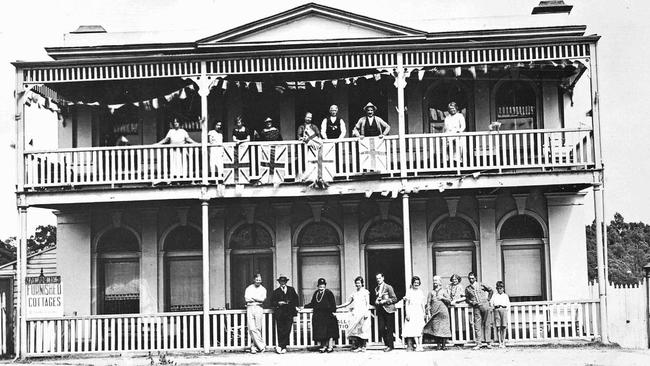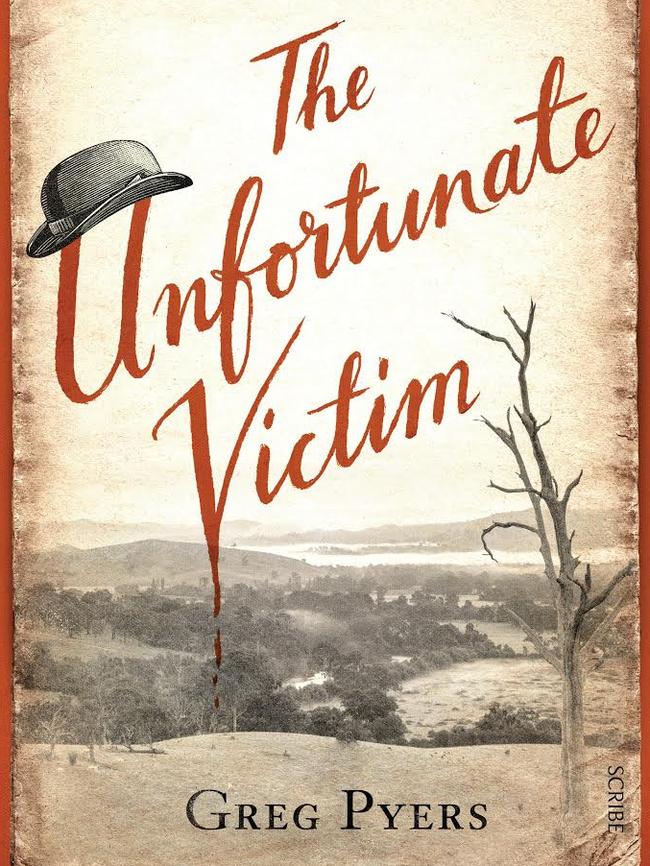Gold rush mystery unveiled in The Unfortunate Victim
Daylesford local Greg Pyers has produced a debut crime novel set in the gold rush era of the 1850s-60s.

The spa town of Daylesford in country Victoria has long been a favourite getaway for Melburnians in search of revivification. But seldom has it crossed any sort of literary radar (although it boasts one of the nation’s most charmingly situated second-hand bookshops. Enter Daylesford local Greg Pyers with a debut crime fiction set in the gold rush era of the 1850s-60s.
And Pyers has mined a rich vein of local history for this novel. His recreation of daily life in the early township is evocative, from the toils of the miners to the bountiful public houses of varying repute, where barmaids named Squeaky Betsy and Waxy Venus relieve the working men of their hard-earned.
A wide cast of local characters is introduced (all of whom are based on real people, we are told in an author’s note), the rhythm of everyday life is painted with colour and verisimilitude and there is an intimate knowledge of the town’s geography, flora and seasons. The Unfortunate Victim seems set, in its early chapters, to be an immersive murder mystery.
By signalling when the crime is to occur — chapter two is entitled ‘‘Wednesday Evening 21 December, Seven Days before the Murder’’ — a good deal of narrative momentum is introduced as well. When it comes, the murder — of young, recently wed Maggie Stuart — is disturbing in its viciousness, and puzzling. There are indications of a sexual assault, but who would have wanted to kill her?

Itinerant farmhand David Rose was seen camping near her house in the days preceding her death, so suspicion falls on him. But it also falls on Italian tradesman Serafino Bonetti, whose swarthy appearance fits an eyewitness report of someone with dark features spotted close by Maggie’s house that night.
From here the book enters a comic mode that reminded me of the charming historical crime fictions of Melbourne’s Robert Gott, whom the author thanks in his acknowledgments. The local constabulary mounts an incompetent search for Rose, desperate for a result to allay the public clamour. They are also motivated by the opportunity to gain a slice of the considerable reward up for grabs.
One of the constables knows that Bonetti is cuckolding him, so he keeps him locked up for weeks despite his manifest innocence. It takes the arrival of Otto Berliner, a one-time Daylesford detective (now setting himself up as a private investigator in Melbourne), to set things in order. Within days, using the most elementary deductive reasoning, Rose is duly apprehended.
But although it remains an enjoyable yarn, problems start to mount in the remainder of the novel. We traverse the details of the day of the crime and the clues found at the crime scene too many times: first at an inquest, then at Rose’s eventual trial, then again when Berliner chooses to re-examine the case once more, interrogating Rose’s inept defence lawyer and studying the photographs of the crime scene taken by local portrait artist Tom Chuck.
There is also the matter of the historical occluding the fictional tale. We are told the book is based on a true story — a murder committed in Daylesford in 1864 — and that all the characters are based on real people. But we aren’t offered any information about whether any of the events has been tweaked or to what extent.
The identity, motivation and fate of the murderer, for instance, are revealed towards the end in some surprising, somewhat improbable twists. Was it really this way? It’s at this point one yearns for the real story; a ‘‘note on sources’’ in an afterword might have sufficed. As it stands, the reader is left wondering whether this is a dramatisation of real events, or the real events are just a springboard for a plot of the author’s own devising.
On the other hand, Pyers has alighted on an intriguing historical character in Berliner, who made quite a name for himself at the time, being involved in the cause celebre that was the Tichborne case, and apparently solving several murders. He was clearly an enterprising detective who didn’t suffer fools (that is, the police!) gladly, and the portrait of him here is a fond one. He was perhaps rather a dandy and a touch pompous, but at least a professional in a time that badly needed them.
The story of David Rose (real name David Young), meanwhile, is a sobering one: an ex-convict, transported at 16, he was effectively branded for life by his lack of education and low social station. He was destined to be scapegoated if he was ever in the wrong place at the wrong time.
The Unfortunate Victim becomes a little stuck in the honey pot of its fascinating goldfields historical underpinnings to succeed fully on fictional terms. Pyers, though, is a most able wordsmith, and the novel will be enjoyed particularly by those familiar with the town and curious about its colourful past.
Martin Shaw is a former Melbourne bookseller now based in Leipzig.
The Unfortunate Victim
By Greg Pyers
Scribe, 304pp, $32.99


